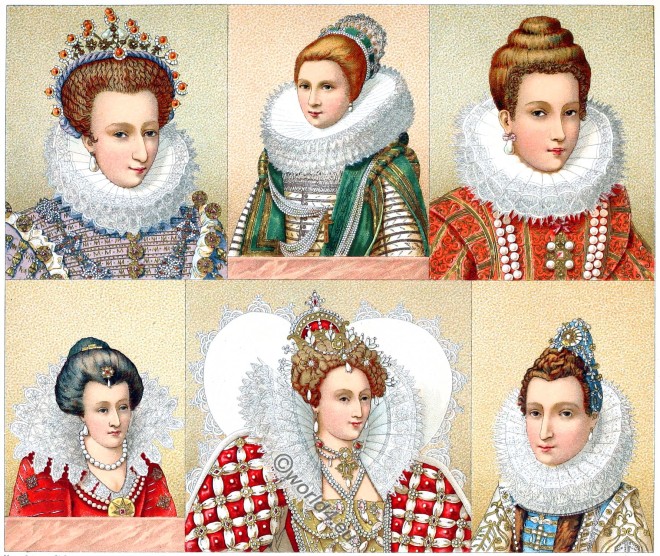French styles of the Baroque and Rococo in the 18th century. Wigs and hats. Principles of the French-Italian Riding School. The most popular colours for horses.
Category: Baroque
Beard, hair and wigs fashions during the 17th and 18th century.
Germany 17th and 18th century. Fashions of the day: Beard, hair and wigs. Historical figures. Clergymen, statesmen and warriors.
The great state robe. General fashion types. France 1775-1785.
France 18th century. The great state robe. Fashion types 1775-1785. The decoration. Hairstyle. Galerie des modes et costumes français
The Fontange. Female costumes under the reign of Louis XIV.
The costumes depicted here belong to the second half of the reign of Louis XIV and the end of the 17th century. The first characteristic feature is the large headdress, called Fontange.
Louis XIV and the officers in the livery of the royal house.
The fragments shown here are borrowed from a painting by Van der Maulen depicting the entry of Louis XIV and Maria Theresa into Arras after the beginning of the campaign in 1667. The Queen’s Marstall. The grand stable master. Ladies of honour. The Gardes du Corps. The king’s chariot.
The Illuminati and their era. Imitations of Illuminism. Freemasonry.
The Illuminati and the Freemasons. Freemasonry and the French Revolution. The Order of Perfectibilists.
Woman’s dress. Fashion in Europe 16th & 17th century. Ruffs. Hairstyles.
The Italian fashion in France. The collars of the dresses. Metal and wooden corsets. Display of fine lingerie. The passementerie works and laces. The rules of etiquette. The expansion of ruffs.
Four French Vernis Martin Fans and One of Ivory Brisé.
Fan decoration of the reign of Louis XIV., and during the first part of the reign of Louis XV. was greatly improved by the celebrated Vernis Martin (Martin’s Varnish).
Textiles and Embroidery during the Tudor and Stuart Periods.
Art in England during the Elizabethan and Stuart Periods. Textiles and Embroidery by Aymer Vallance.
The sword of James Graham, 1. Marquess of Montrose.
The sword of James Graham given by Charles I.










